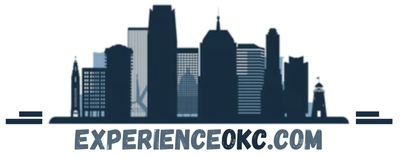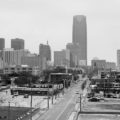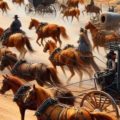As a proud resident of Oklahoma City, I’ve always been fascinated by the city’s rich history and its pivotal role in shaping the American Westward Expansion. From its humble beginnings as a frontier outpost to its emergence as a bustling metropolis, Oklahoma City has played a significant part in the epic saga of westward expansion. Join me as we explore the captivating story of how this vibrant city became a cornerstone of the American frontier.
The Land Run of 1889: Birth of a City
No discussion of Oklahoma City’s role in the westward expansion would be complete without mentioning the iconic Land Run of 1889. This historic event marked the opening of the Unassigned Lands, including the area that would later become Oklahoma City, to settlers eager to claim their stake in the frontier. On April 22, 1889, tens of thousands of homesteaders lined up at the starting line, waiting for the signal to rush in and stake their claim to the land. In a matter of hours, Oklahoma City was born, as makeshift settlements sprang up overnight and the foundations of a new community were laid.
The Land Run of 1889 sparked a frenzy of activity as settlers from all walks of life poured into the newly opened territory, seeking a fresh start and the promise of a better future. From farmers and ranchers to merchants and tradesmen, people from across the country flocked to Oklahoma City, bringing with them their hopes, dreams, and ambitions. The rapid influx of settlers transformed the once-sparse wilderness into a bustling frontier town, teeming with life and opportunity.
The Trail of Tears: Tragedy and Resilience
While the Land Run of 1889 symbolizes the promise of opportunity and prosperity for some, it’s important to acknowledge the darker side of Oklahoma City’s history—the Trail of Tears. In the 1830s, thousands of Native American tribes, including the Cherokee, Choctaw, and Chickasaw, were forcibly removed from their ancestral lands in the southeastern United States and relocated to Indian Territory, which encompassed present-day Oklahoma. The journey westward was arduous and devastating, with many Native Americans perishing along the Trail of Tears. Despite this tragic chapter in our city’s past, the resilience and perseverance of Native American tribes continue to shape the cultural fabric of Oklahoma City to this day.
The Rise of Oklahoma City: From Frontier Town to Modern Metropolis
In the decades following the Land Run of 1889, Oklahoma City experienced rapid growth and development, fueled by waves of settlers drawn to the promise of land and opportunity. From cattle ranchers and oil barons to entrepreneurs and pioneers, people from all walks of life flocked to Oklahoma City, bringing with them their dreams and ambitions. The discovery of oil in the early 20th century further accelerated the city’s growth, transforming it into a thriving hub of commerce, industry, and culture.
The discovery of oil in Oklahoma City in the early 20th century marked a turning point in its history, propelling the city into a new era of prosperity and growth. As oil wells sprang up across the region, Oklahoma City became known as the “Oil Capital of the World,” attracting investment, industry, and innovation from far and wide. The oil boom brought newfound wealth and opportunity to Oklahoma City, fueling a construction boom that reshaped the city’s skyline and laid the foundations for its future success.
Modern Oklahoma City: A Beacon of Progress
Today, Oklahoma City stands as a testament to the resilience and spirit of its people, a vibrant metropolis that embraces its past while looking towards the future with optimism and determination. From its historic landmarks and cultural heritage to its modern amenities and dynamic economy, Oklahoma City offers a glimpse into the enduring legacy of the American Westward Expansion.
Conclusion
From the Land Run of 1889 to the Trail of Tears, from frontier outpost to modern metropolis, the city’s history is a testament to the indomitable spirit of those who dared to dream of a better life on the American frontier. As we celebrate the legacy of westward expansion, let us also remember the sacrifices and struggles of those who came before us, and honor their memory by continuing to build a brighter future for generations to come.


















